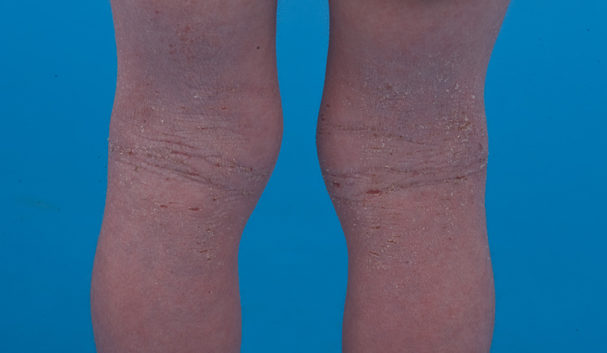Scientists have used single-cell sequencing to generate an atlas of the human skin from both developing and adult sources, identifying differences and similarities across heterogeneous populations of skin cells. This highly detailed map of skin reveals that cellular processes from development are re-activated in cells from patients with inflammatory skin disease. In addition, it uncovered that skin from eczema and psoriasis patients share many of the same molecular pathways as developing skin cells. This offers potential new drug targets for treating these painful skin diseases.
This work is published in Science in the paper, “Developmental cell programs are co-opted in inflammatory skin disease.”
Our skin acts as a barrier, protecting us against invading bacteria or viruses, and is vital for health. Inflammatory skin diseases such as atopic eczema and psoriasis are chronic conditions, where the immune system becomes overactive, causing itchy or flaky skin that can be very painful and prone to infection. These conditions can have significant impact on people’s lives, but the trigger is unknown and there is no cure, with treatments only helping to relieve the symptoms, not the cause.
Part of the global Human Cell Atlas effort to map every cell type in the human body, the new comprehensive atlas of developing and adult skin is a valuable resource for scientists worldwide. It could also provide a template for regenerative medicine, helping researchers grow skin in the laboratory more effectively.
Skin is a complex tissue made up of many different types of cells. To learn how skin forms and how this relates to adult health and disease, the researchers studied cells from developing skin, comparing these with biopsies from healthy adults, and eczema and psoriasis patients. Using single-cell technology and machine learning, the team analyzed more than half a million individual skin cells, to see exactly which genes were switched on in each cell. This allowed them to find out what each individual cell does and how the cells talk to each other.
“There have been decades of research on skin cells grown in the laboratory,” noted Fiona Watt, PhD, professor at Kings College London. She continued: “However, it is not always clear how the properties of the cells change in the laboratory setting. By revealing the detailed make-up of cells immediately on isolation from developing and adult human skin, this Skin Cell Atlas can act as a template for researchers trying to reconstruct healthy skin in regenerative medicine. Our data is openly available, and we hope this will aid research into creating skin tissue in the laboratory.”
To their surprise, the researchers discovered that the diseased skin cells shared many of the same cellular mechanisms as developing cells.
Muzlifah Haniffa, MD, PhD, professor at Newcastle University and associate faculty at the Wellcome Sanger Institute, said: “This Skin Cell Atlas reveals specific molecular signals sent by healthy developing skin to summon immune cells and form a protective layer. We were amazed to see that eczema and psoriasis skin cells were sending the same molecular signals, which could over activate immune cells and cause the disease. This had never been seen before. Discovering that developing cell pathways re-emerge is a huge leap in our understanding of inflammatory skin disease and offers new routes for finding treatments.”
The study also provides a completely new understanding of inflammatory disease, opening up new avenues for research on other inflammatory diseases such as rheumatoid arthritis and inflammatory bowel disease.
Gary Reynolds, MBBS, PhD, clinical research fellow at Newcastle University and a first author on the study, said: “While our study focused on inflammatory skin disease, there is potential that other inflammatory diseases such as rheumatoid arthritis or inflammatory bowel disease could be triggered in the same way. This research shows the importance of studying development and could open up entirely new avenues for inflammatory disease research.”
The study uncovered how healthy skin tissue develops and revealed the cells that are present in adult skin. This has great implications for regenerative medicine, especially for burn victims.
“Part of the international Human Cell Atlas initiative to create a ‘Google map’ of the human body,” noted Sarah Teichmann, PhD, co-senior author from the Wellcome Sanger Institute and University of Cambridge, and co-chair of the Human Cell Atlas initiative. “This Skin Cell Atlas study,” she continued, “reveals that studying development can not only help understand how tissues are formed in the first place, but also shed vital light on diseases. This map reveals a completely new way of thinking about inflammatory diseases, and is an important reference that other scientists can use to investigate the causes of disease, and inform potential new treatments.”



